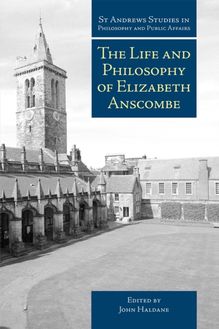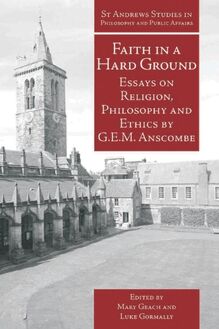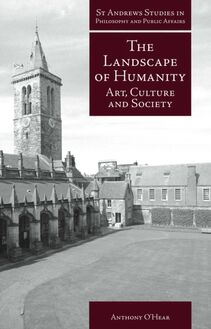-
 Univers
Univers
-
 Ebooks
Ebooks
-
 Livres audio
Livres audio
-
 Presse
Presse
-
 Podcasts
Podcasts
-
 BD
BD
-
 Documents
Documents
-
- Cours
- Révisions
- Ressources pédagogiques
- Sciences de l’éducation
- Manuels scolaires
- Langues
- Travaux de classe
- Annales de BEP
- Etudes supérieures
- Maternelle et primaire
- Fiches de lecture
- Orientation scolaire
- Méthodologie
- Corrigés de devoir
- Annales d’examens et concours
- Annales du bac
- Annales du brevet
- Rapports de stage
La lecture à portée de main
Vous pourrez modifier la taille du texte de cet ouvrage
Découvre YouScribe en t'inscrivant gratuitement
Je m'inscrisDécouvre YouScribe en t'inscrivant gratuitement
Je m'inscrisEn savoir plus
Vous pourrez modifier la taille du texte de cet ouvrage
En savoir plus

Description
Sujets
Informations
| Publié par | Andrews UK |
| Date de parution | 07 juin 2017 |
| Nombre de lectures | 0 |
| EAN13 | 9781845409470 |
| Langue | English |
Informations légales : prix de location à la page 0,0750€. Cette information est donnée uniquement à titre indicatif conformément à la législation en vigueur.
Extrait
Art, Morality and Human Nature
Writings by Richard W. Beardsmore
Edited by John Haldane and Ieuan Lloyd
imprint-academic.com
2017 digital version converted and published by
Andrews UK Limited
www.andrewsuk.com
Copyright © P. Beardsmore, 2017
The moral rights of the authors have been asserted.
No part of this publication may be reproduced in any form without permission, except for the quotation of brief passages in criticism and discussion.
Cover Photograph:
St Salvator’s Quadrangle, St Andrews by Peter Adamson from the University of St Andrews collection
For Pam and Anna
Introduction, John Haldane and Ieuan Lloyd
I
Part 1 of the present book, entitled ‘Art and Morality’, first appeared in 1971 as a short monograph published by Macmillan in a series under the editorship of W.D. Hudson entitled New Studies in Practical Philosophy . In acknowledging this origin, it is also appropriate to quote the general characterization of that series as described by Hudson himself:
The point of view of this series is that of contemporary analytical philosophy. Each study will deal with an aspect of moral philosophy. Particular attention will be paid to the logic of moral discourse, and the practical problems of morality. The relationship between morality and other ‘universes of discourse’, such as art and science, will also be explored.
Although the series in which Richard Beardsmore’s text is now reprinted, namely St Andrews Studies in Philosophy and Public Affairs , was conceived without reference to Hudson’s prior venture, some thirty years after the latter’s beginning and short duration, there are significant similarities between the rationales for the two series: broadly, to engage philosophically in an analytical manner with issues of value and practice.
But while the general, though not universal, approach of the present series is also that of ‘contemporary analytical philosophy’ it is worth noting a degree of difference in what that expression might connote so far as moral philosophy is concerned then and now. [1] At the time of its original appearance Art and Morality was the third of four books in New Studies with two more announced as in preparation (and subsequently published). Of these initial six books four were collections of essays by R.M. Hare, the then White’s Professor of Moral Philosophy at Oxford. Hare’s concern for the practical, or action-guiding, aspect of philosophy dated back to the mid 1950s and the choice of his work for inclusion in New Studies in Practical Philosophy makes sense on that account.
As an academic philosopher, however, Richard Hare was better known to fellow-professionals for his metaethical views; for while at the level of normative or practical ethics he believed that philosophy could contribute to problems in everyday life, at the level of the analysis of the status of moral claims he held that they were not statements apt to be either true or false, but expressions of commitment. To say that a practice or policy is good is not to evaluate it for what it is in itself, but to recommend it as of a kind that one would choose given one’s fundamental normative commitments and thereby prescribe for others. Hare saw no contradiction or tension between denying truth to value judgements and prescriptions while nonetheless claiming that the latter could be reasonable or unreasonable because he located the place of reason not in discerning truth but in maintaining consistency.
In the period when Hudson was editing New Studies views like Hare’s were generally more widely favoured than versions of moral cognitivism and objectivism but there was growing support for the idea associated with writers such as Elizabeth Anscombe, Philippa Foot, Peter Geach and Geoffrey Warnock that judgements of goodness and of badness, and thereby of rightness and of wrongness of policy and action, are answerable to objective standards deriving from human needs, that is, requirements the satisfaction of which contributes to or constitutes human flourishing. Hudson discussed these differing views in a survey book of his own: Modern Moral Philosophy (London: Macmillan, 1970). While giving fair coverage to the disputing parties, there and in a later book, A Century of Moral Philosophy (Cambridge: Lutterworth, 1983), Hudson gives judgement in favour of Hare’s position. In the latter he writes, ‘In my opinion it is the most clearly stated and comprehensively argued of contemporary ethical theories’ (p. 126).
By then, however, the tide had turned and a variety of broadly objectivist views had become fashionable as positions like Hare’s seemed to fail to account adequately for the place of moral experience, of moral reasoning, and of the idea of the human good. Different emphases on these different aspects was then taken to support moral realism, moral rationalism and moral naturalism, respectively.
This brings us a decade beyond the period of New Studies (which seems to have lasted for only a couple of years), but it is relevant to mention the change in climate to locate the environment in which Beardsmore’s Art and Morality was first published and to place his own distinctive philosophical views about the nature of morality. So far as concerns the opposition between Hare’s ‘prescriptivism’ and the ‘descriptivism’ of his objectivist opponents Beardsmore does not address this explicitly. Indeed, he has little to say directly about the ‘status’ of moral judgements as that was the subject of metaethical debates. What he does address (principally in section 3, ‘Autonomism’) is the character and subject of moral thinking in relation to other kinds of thought: the aesthetic, and the purposive or prudential. Here he does touch indirectly on the positions of Hare and of the neo-Aristotelians, in the former case by name, in the latter by way of invoking a surrogate criticism by J.L. Stocks of earlier versions of neo-Aristotelianism. His claim is that both Hare and the prudentialists misunderstand the nature of moral considerations and the way in which they feature in someone’s thought and life more broadly, and therefore they misunderstand the way in which moral considerations contrast, but may also overlap with aesthetic and artistic ones.
Beardsmore’s criticisms are self-contained within Art and Morality and fully expressed in its pages. One also gets a sense of them, and of how they were perceived by W.D. Hudson in the following editorial foreword to the original publication:
In this monograph Mr Beardsmore first identifies and criticises two views of the relationship between art and morality, which he identifies respectively as moralism and autonomism. Moralism is, crudely stated, the belief that the point of art is to teach morality; autonomism, the belief that art has nothing whatever to do with morality. Both points of view are, according to the author of this study, mistaken in their desire to give a simple account of the relationship between art and morality. To consider this relationship, he thinks, is not to consider one question but a collection of problems which are of central importance for both ethics and aesthetics. With a wealth of illustration, Mr Beardsmore brings out what he takes these problems, and their solutions, to be. In the last part of his study he develops his view that art can give men an understanding which makes their moral judgements more sensitive and intelligent.
One will get a deeper sense of his outlook so far as the character of morality itself is concerned, however, by knowing something of a book he published two years previously entitled Moral Reasoning (London: Routledge & Kegan Paul, 1969). In this his criticisms of Hare and of Foot are explicit and sustained (though his sympathy is more with the latter than the former) and again the main focus of his concern is what he regards as the misidentification of the place and character of moral thinking in the life of human agents. In brief, he argues that Hare does not really allow for the existence of genuine rational moral disagreement, while Foot restricts the scope for this by presuming that disagreement occurs only within the context of agreement as to what count as reasons in support of one view or another. Put another way Hare is insufficiently cognitivist and Foot is too restrictedly such.
With this is also revealed a philosophical methodology that owes much to Wittgenstein as that came to Beardsmore initially through his teachers and then his colleagues at the University of Wales, principally Rush Rhees, Peter Winch, Dewi Phillips and Howard Mounce, where he was both an undergraduate and a graduate student, and later a lecturer. One can get a sense of both the line of criticism (of Hare and Foot) and the debt to Wittgenstein in the following extract from the ‘Conclusion’:
The fact that philosophers misdescribe things with which they are perfectly familiar ... does not imply any severe lack of comprehension on their part. The mistakes and confusions in their accounts arise because their understanding has been distorted by the models which they have adopted. The result is a systematic lapse into nonsense which can be arrested only by a wholesale rejection of these models. And it is here that the maxim, ‘Don’t think, but look’ [Wittgenstein, Philosophical Investigations , 66, p. 31e] becomes important. For in order to escape from the false theories, we have to stop assuming that moral reasons must be of a certain sort, and look to see how they actually are used by moral agents. This does not involve a superficial or uncritical approach to philosophy (as some writers have thought). It does imply taking seriously what men regard as a justification.
I have suggested ... that when we do this, there are two important things that we notice. The fir
-
 Univers
Univers
-
 Ebooks
Ebooks
-
 Livres audio
Livres audio
-
 Presse
Presse
-
 Podcasts
Podcasts
-
 BD
BD
-
 Documents
Documents
-
Jeunesse
-
Littérature
-
Ressources professionnelles
-
Santé et bien-être
-
Savoirs
-
Education
-
Loisirs et hobbies
-
Art, musique et cinéma
-
Actualité et débat de société
-
Jeunesse
-
Littérature
-
Ressources professionnelles
-
Santé et bien-être
-
Savoirs
-
Education
-
Loisirs et hobbies
-
Art, musique et cinéma
-
Actualité et débat de société
-
Actualités
-
Lifestyle
-
Presse jeunesse
-
Presse professionnelle
-
Pratique
-
Presse sportive
-
Presse internationale
-
Culture & Médias
-
Action et Aventures
-
Science-fiction et Fantasy
-
Société
-
Jeunesse
-
Littérature
-
Ressources professionnelles
-
Santé et bien-être
-
Savoirs
-
Education
-
Loisirs et hobbies
-
Art, musique et cinéma
-
Actualité et débat de société
- Cours
- Révisions
- Ressources pédagogiques
- Sciences de l’éducation
- Manuels scolaires
- Langues
- Travaux de classe
- Annales de BEP
- Etudes supérieures
- Maternelle et primaire
- Fiches de lecture
- Orientation scolaire
- Méthodologie
- Corrigés de devoir
- Annales d’examens et concours
- Annales du bac
- Annales du brevet
- Rapports de stage



















